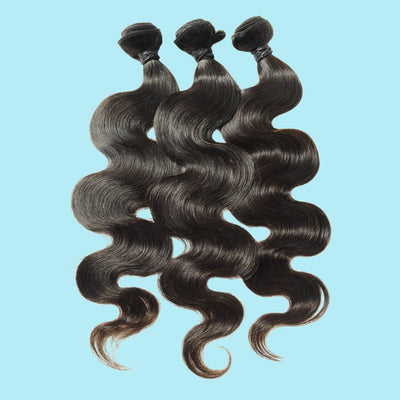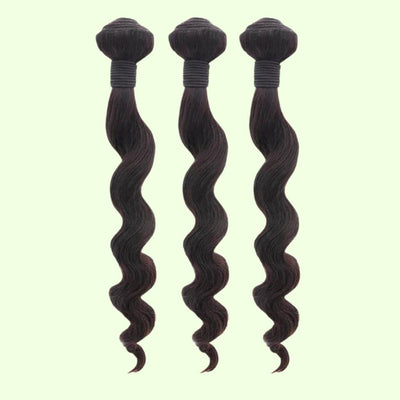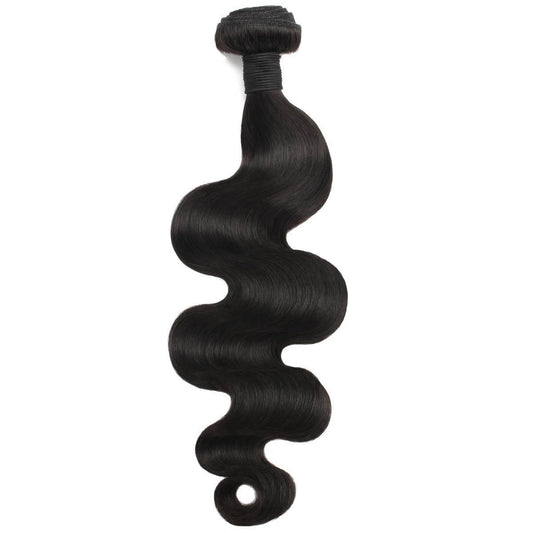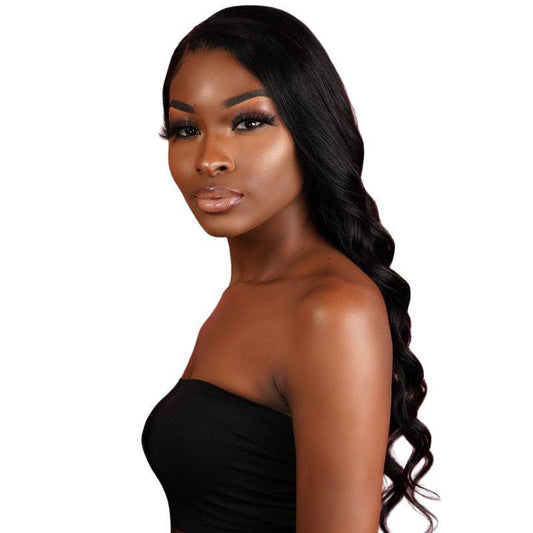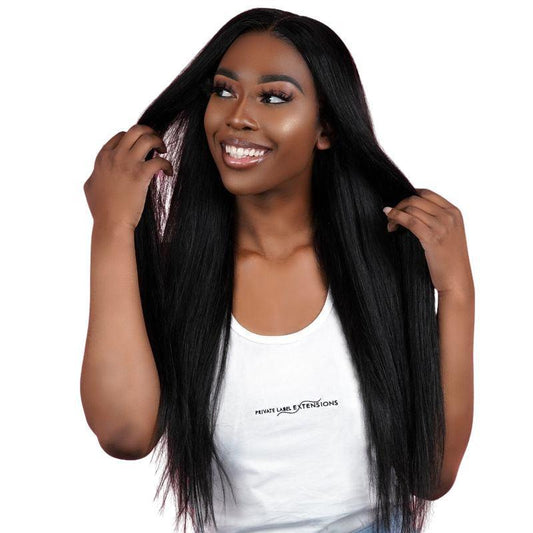1260 Memorial Drive
Atlanta, Georgia 30316
404-458-1330
Does Hair Color Change Your Hair Texture?
Mikey MoranWith so many ways to switch up our looks, I think hair dye is one of the most exciting.
You can change up your hair color by dying your virgin hair bundles and look like a new person. In the summertime, we go bright, and in the fall and winter, we dye it dark.
I have always loved dying my hair and trying out new hair colors, whether it's just highlights, partial coverage, or full color. ❤️🔥
However, as you know, any chemical can alter your hair. Even the hair color that you choose also plays a part in the alteration of your hair texture.
Keep reading to see how this remarkable transformation can alter your hair, good and bad.

Yes, Hair Dye Is Altering
Any chemical process that you put your hair through will affect your hair.
Some hair dye can dry out your hair, and some dye isn't that damaging.
The results that your hair experiences all depend on the technique and type of hair dye used. It is always best to see a professional hairdresser for hair coloring.
Sometimes, when we do our hair, we can overprocess it and not even know it.
Over-processed hair can become damaged and will eventually break off.
Hair dye directly hits the hair cuticle, which causes it to open and accept the color.
When this coloring process happens, it can make the hair shaft lose its vitality.
Once the hair loses its life, it can take on a different texture once the strands become stripped. That is why it's so important that your hair dye is applied correctly.
If your hair texture dramatically changes, you then know that it's damaged. When you are dying your hair, your curls or coils should remain intact.
Hair types and how they react to hair color determines whether or not the texture will change.
No one hair texture is more prone to color damage than the other, but different textures can be affected more than others, whether good or bad.
I bet you didn't know that your hair texture can sometimes cause or even prevent specific effects usually caused by hair dye.
Coarse Hair
Coarser hair textures usually do not have a smooth cuticle, which can make them more susceptible to becoming rough once dyed.
The hair becoming rough and dry will not happen to every person with this hair type, but it is a possibility to consider when you decide to dye your hair.
They say that the more you color coarse hair, the frizzier your hair becomes.
Frizzy hair is an indication of dryness. Some may even dye their hair in an attempt to texturize their texture.
That means that they want to add more smoothness and less kink. Dying your hair can do this. If you over-process your hair, the curls can become tighter, and if not, the coils will loosen.
When you have coarse hair, you want to make sure that your stylist is using cream-based hair dye; this is less harmful to your afro hair.

Curls and Coils
I have curly hair, and my hair takes well to hair color.
It does not take much for me to achieve the desired color. Curly and coily hair textures also can have a rough cuticle but are even more porous, which aids the strands in accepting the hair color.
Having porous hair means that your hair can absorb moisture better. I have noticed that before being entirely natural, my hair texture seemed to become more smooth and less frizzy.
Once I became entirely natural, I continued to dye my hair and saw that it made my curls more defined and still less frizzy.
So, as a person who has thicker hair, I can say that dying my hair has never damaged my hair beyond repair. So go for it! Live a little!
Fine and Straight Hair
People with fine and straight hair ideally are the best candidates for hair coloring because of how quickly their hair will accept the color.
When you have fine hair, it is thinner and less dense than other textures, which can be good or bad.
It is a good thing to color your hair because you can achieve color better using fewer chemicals than the latter.
It can be a bad thing because thin hair is also prone to shedding more, so if processed excessively, it can lead to damage.

Blondes Have More Fun But Pay for It
Blonde hair has always been the rave for women for decades.
I personally love blonde hair. Every shade is so pretty and adds a different type of flair to your look.
No one can go blonde without bleaching their hair, and this is where the issue comes into play.
When people dye their hair blonde, it is more than likely that you will have to lift your hair before applying the actual color.
Lifting your hair to achieve a lighter color is when hair coloring can become damaging and have the most effect on your hair texture.
Lifting is the process of making the hair lighter; it is similar to bleaching. Those with thicker textures will need to get their hair lifted more than likely because of how dense their texture is.
Also, if you have naturally darker hair like jet black hair, the same applies. If you are not naturally blonde, transitioning to blonde can be harsh on your hair, especially depending on the shade of blonde you get.
Going platinum blonde is the lightest that you can go, and this will lessen your curl pattern. If you have thick hair, it will not get rid of your curl pattern, but you will notice how loose your curls become.
Those with coarser hair may experience their coils growing tighter yet less moisturized. It all depends on the person, the hair care regimen, and hair texture. I loved having blonde hair!
I have had three-toned blonde highlights, half of my head honey blonde, and even my entire head blonde. Each time that I dyed my hair, the stylist had to do a double process to achieve the hue I wanted.
Lifting your natural hair color before dying your hair makes the coloring process a dual process as opposed to a single one.
Single-color processing has less effect because it has fewer chemicals than double processing.

Single Processing vs. Double Processing
Singling processing means that you are coloring the hair a new color in just one easy step.
Coloring hair with a single process is more popular than the two and causes less damage, but you can still see changes in your hair texture years later.
Single processing is great for covering gray hair and streaks and is perfect for DIY hair stylists at home.
On the other hand, double processing takes longer, and because of its chemicals, it will alter your hair texture one way or another. Dying your hair using double processing is more famous for highlights or lowlights and full coverage with a tint.
Typically, double-color processing is necessary when a person wants to lighten up their hair color.
This dual coloring process is not a good idea for the DIY crowd; go to a professional, please.

Permanent Damage or Is It Reversible?
How much one colors one's hair can determine whether or not it is permanently damaged.
Typically, when you do not color your hair as much or as brightly, the damage can be reversed.
The changes to your hair can be unpredictable, but with proper care, they can be manageable.
One thing that they do not tell you about hair color is that during the process, once the hair's protein bond is rearranged, it can cause a perm effect.
This perm effect could be why thicker hair can loosen up and why it takes so long to straighten hair.
To repair this, use a protein reconstructor; it'll help bring your curls back to life. If you do not keep up with conditioning your hair regularly, you can cause damage that will be hard to repair.
Because of how hair coloring can dry out hair, you want to make sure that you are feeding it back the moisture it has lost.
Another damage-related issue is that once over-processed, the hair loses its elasticity.
The elasticity helps you do simple hairstyles like a ponytail. We love our hair, so no one wants stiff and dry hair.
Dye with caution, but make sure you keep your hair healthy and moisturized.

Add Moisture During the Process: Hair Color Gloss
Aside from using cream-based hair dyes, hair glosses help restore moisture after coloring.
A glossing treatment, aka color glaze, gives vitality back to your hair while smoothing the hair. I suggest using this if you are going to dye your hair yourself.
After you dye your hair, try a hair gloss, and then condition your hair. The gloss will maintain your color, especially if you have a brighter color.
You can also use this product if you are not using a cream-based hair dye; it will help. When you are going from dark to blonde, a finishing hair gloss is perfect for you!
If you are planning to go platinum, go to a stylist; stylists know how vital healthy hair is, so they usually will use a hair gloss during the process.
For the wintertime, when our hair can be its dullest, use a hair color gloss that will keep it shiny and vibrant.

Light vs. Dark
Going lighter takes more processing and chemicals than the other.
Typically, when you want darker hair, it's a single process that requires no bleaching or lifting. In essence, going darker is healthier, while going lighter is riskier.
Using bleach to lighten up your hair will weaken your hair bonds, which will cause your hair (if curly) to become less curly.
Again, looser curls aren't always a bad thing, but you know what they say: the more shrinkage, the healthier the hair.
If you want to dye your hair and do not experience any texture change, try temporary color.
Temporary color will fade and eventually wash out with no super harsh chemicals that will break the hair cuticle.
Because of how brief it is, it does not penetrate the hair follicle, which makes it the safest option. With any other type of hair dye or bleaching, do so at your own risk, but don't be afraid.

Healthy Hair Can Survive Hair Coloring
I know this is a lot of information, and some of it may be alarming, but your hair can survive the hair coloring process, trust me.
The chemicals that help you achieve a new look can also strip your hair of its essential nutrients, but it is not the "end all be all."
Your hair can survive hair coloring. Regardless of the hair color whether it is flannel hair or platinum and how it is applied, the upkeep makes the difference.
Keeping your hair healthy is the key. It is not smart to consistently dye your hair if it's not healthy.
When your hair is not healthy, you are at more risk of alteration, and sometimes unhealthy hair cannot be revived once fried by color.
While some people see changes in their texture immediately after coloring their hair, some people don't see any changes until years down the line.
Everything does not affect everyone the same, and it's all about the health of your hair and how knowledgeable your stylist is. 💇🏿♀️
Just make sure to keep your hair moisturized and nourished to ensure that the hair-dying process does not negatively affect your hair.
With everything hair-related, it is mostly trial and error, so do not take this information and think you cannot dye your hair; you can.
Considering the professional route is the safest bet to ensure that your hair color is the bomb and your hair stays beautiful.
Be bold, brave, and vibrant, but always make sure your hair is healthy!

